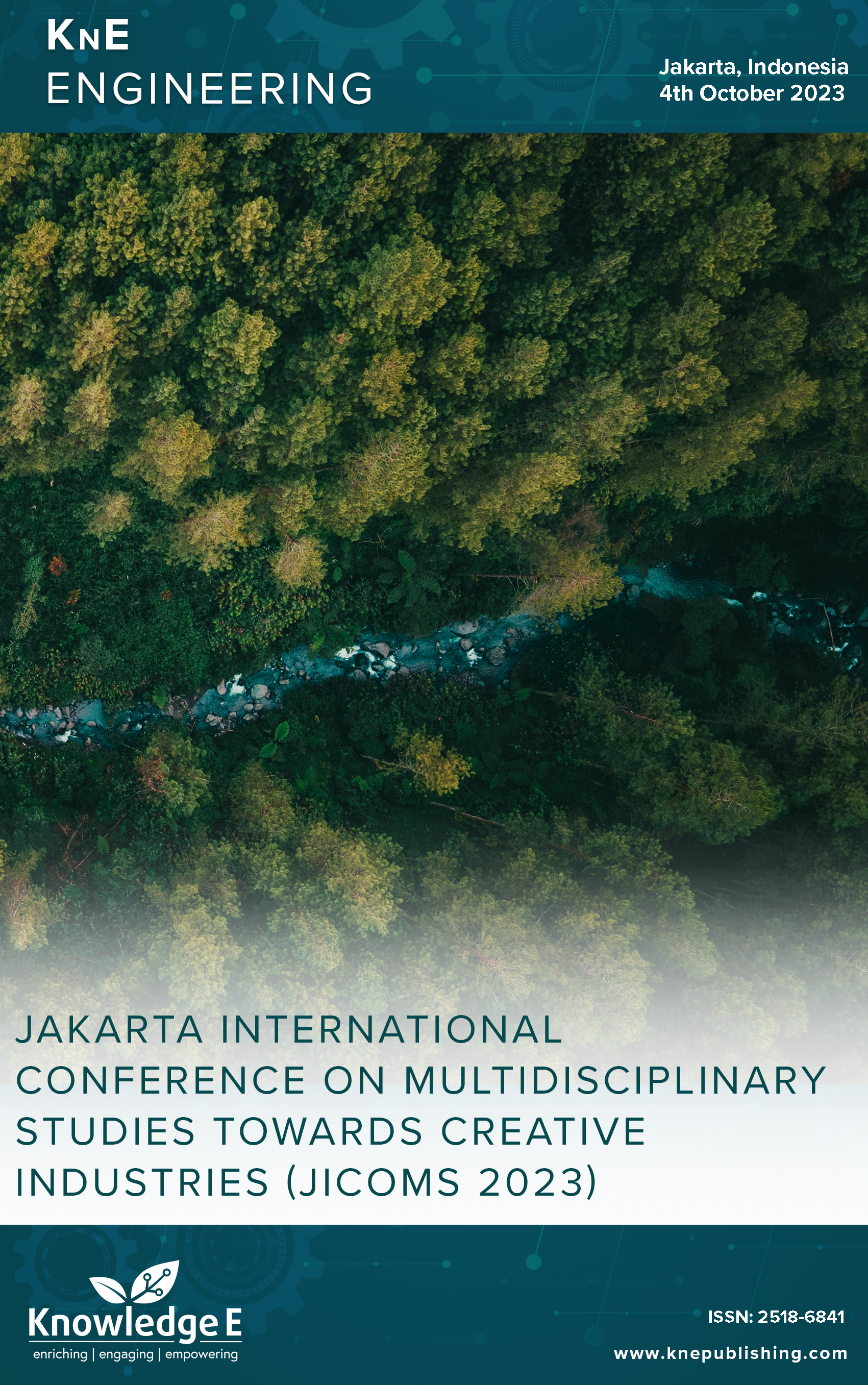Antioxidant Analysis of Sukun (Artocarpus Altilis (Parkinson) Fosberg) Leaves Using DPPH and IC50 Methods
DOI:
https://doi.org/10.18502/keg.v6i1.15355Abstract
Sukun (Artocarpus altilis (Parkinson) Fosberg) are abundantly found in Indonesia. However, the usage of it was very limited. This research was conducted to analyze the antioxidant activity of Sukun leaves as one of the underused plants in Indonesia. Mature Sukun leaves were extracted using maceration method where 96% technical ethanol was used as the solvent. DPPH analysis was conducted using Burdan and Olezek method (2001). IC50 method was performed to analyze Vit C content of Sukun leaves. The analysis was performed on 2, 3, 4, 5, and 6 ppm concentrations. By using the DPPH method, it was found that the total antioxidant activity of the extract was 45.79; 48.11; 49.38; 50.95; and 51.70 respectively. IC 50 analysis shows that the vitamin C content of the extract was 54.82; 57.72; 60.64; 63.94; and 65.49 respectively for every concentration. It can be concluded that Sukun leaves showed strong antioxidant activity.
Keywords: antioxidant analysis, Sukun (Artocarpus altilis), nutrition analysis, underused plant
References
[2] Fakhrudin N, Mufinnah FF, Husni MF, Wardana AE, Wulandari EI, Putra AR, et al. Screening of selected indonesian plants for antiplatelet activity. Biodiversitas (Surak). 2021;22(12):5268–73.
[3] Yumni GG, Pertiwi KK, Widiyastuti Y, Fakhrudin N. Isolation of 2-Geranyl-2',3,4,4'- Tetrahydroxy Dihydrochalcone from Breadfruit Leaf (Artocarpus altilis (Park.) Fosberg) Using Flash Column Chromatography [Online,. Available: Artocarpus communis, Separation, Active compound, Flavonoid.]. J. Tumbuh. Obat Indones. 2023;16(1):2–11.
[4] Ragone D. Breadfruit—Artocarpus altilis (Parkinson) Fosberg. Elsevier Inc.; 2018. https://doi.org/10.1016/B978-0-12-803138-4.00009-5.
[5] Henry P. mgbang J. Edward, E. N. A., and I. C. Emmanuel, “Nutritional Evaluation of Breadfruit and Beniseed Composite Flours,”. MOJ Food Process. Technol. 2016;2(6):182–7.
[6] Peace N, Edith U, Ugonne F. “Functional, Nutritional and Sensory Characteristics of Biscuits Improved with Plantain, Breadfruit and Termite Flour,” Niger. J. Nutr. Sci., vol. 42, no. 2, pp. 1–10, 2021, [Online]. Available: https://journal.nutritionnigeria.org/wpcontent/ uploads/journal/published_paper/volume-42/issue-2/gnz8ow8M.pdf
[7] Bakare AH, Osundahunsi OF, Olusanya JO. Rheological, baking, and sensory properties of composite bread dough with breadfruit (Artocarpus communis Forst) and wheat flours. Food Sci Nutr. 2015 Dec;4(4):573–87.
[8] Lysák M, Ritz C, Henriksen CB. Assessing consumer acceptance and willingness to pay for novel value-added products made from breadfruit in the Hawaiian Islands. Sustainability (Basel). 2019;11(11):13–7.
[9] Yang L, Zerega N, Montgomery A, Horton DE. Potential of breadfruit cultivation to contribute to climate-resilient low latitude food systems. PLOS Clim. 2022;1(8):e0000062.
[10] Lincoln NK, Cho A, Dow G, Radovich T. Early growth of breadfruit in a variety × environment trial. Agron J. 2019;111(6):3020–7.
[11] P. Fruit, T. To, F. People, C. Jobs, and B. T. H. E. Environment, Trees That Feed Foundation. 2022.
[12] Fielding R, Zaldivar JJ. No Longer ‘Confined to the Lower Keys of Florida’: Mainland United States Cultivation of Breadfruit (Artocarpus altilis) in a Changing Climate. Ann Am Assoc Geogr. 2022;113(2):1–10.
[13] Supriati Y. Sukun sebagai Sumber Pangan Alternatif Substitusi Beras. J. Iptek Tanam. Pangan. 2010;5(2):219–20.
[14] Baba S, Chan HT, Kezuka M, Inoue T, Chan EW. Artocarpus altilis and Pandanus tectorius: two important fruits of Oceania with medicinal values. Emir J Food Agric. 2016;28(8):531–9.
[15] Ojimelukwe PC, Ugwuona FU. The traditional and medicinal use of African breadfruit (Treculia africana Decne): an underutilized ethnic food of the Ibo tribe of South East, Nigeria. J. Ethn. Foods. 2021;8(1):1–13.
[16] Raihandhany R. A Review on Ethnobotanical Aspects of Artocarpus altilis (Park. ) Fosberg (Syn : Artocarpus communis J. R. Forst. & G. Forst. ) (Breadfruit) in Indonesia. Genbinesia. 2022;3(1):10–22.
[17] Leng LY, Nadzri NB, Yee KC, Abdul Razak NB, Shaari AR. “Antioxidant and Total Phenolic Content of Breadfruit (Artocarpus altilis) Leaves,” MATEC Web Conf., vol. 150, 2018, https://doi.org/10.1051/matecconf/201815006007.
[18] Hazekawa M, Nishinakagawa T, Kawakubo-Yasukochi T, Nakashima M. Evaluation of IC50 levels immediately after treatment with anticancer reagents using a real-time cell monitoring device. Exp Ther Med. 2019 Oct;18(4):3197–205.
[19] Safaei M, Maleki H, Soleimanpour H, Norouzy A, Zahiri HS, Vali H, et al. Development of a novel method for the purification of C-phycocyanin pigment from a local cyanobacterial strain Limnothrix sp. NS01 and evaluation of its anticancer properties. Sci Rep. 2019 Jul;9(1):9474.
[20] Kumla J, Suwannarach N, Tanruean K, Lumyong S. Comparative evaluation of chemical composition, phenolic compounds, and antioxidant and antimicrobial activities of tropical black bolete mushroom using different preservation methods. Foods. 2021 Apr;10(4):781.
[21] Vianney YM, Putra SE, Purwanto MG. Antioxidant and toxicity activity of aqueous extracts from various parts of breadfruit and breadnut. Int J Fruit Sci. 2020;20(sup3 no. S3):S1639–51.
[22] Soifoini T, Donno D, Jeannoda V, Rakoto DD, Msahazi A, Farhat SM, et al. Phytochemical composition, antibacterial activity, and antioxidant properties of the artocarpus altilis fruits to promote their consumption in the comoros islands as potential health-promoting food or a source of bioactive molecules for the food industry. Foods. 2021 Sep;10(9):2136.
[23] Sembiring N, et al. “Test of Breadfruit Leaf Extract Cream Preparation (Artocarpus Altilis) and Antioxidant Activity Test with DPPH Method,” vol. 3, no. 7, pp. 1601–1619, 2023, [Online]. Available:https://journal.formosapublisher.org/index.php/mudima/article/view/4085/5241 https://doi.org/10.55927/mudima.v3i7.4085.


